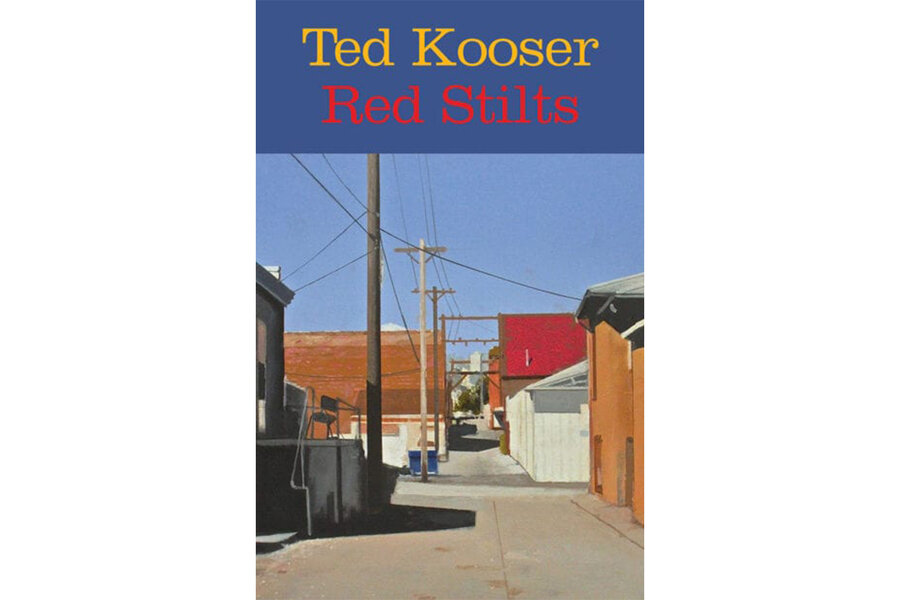Poet Ted Kooser’s ‘Red Stilts’: Beauty in small moments
For millions of people left homebound by the coronavirus pandemic, the small moments in life are suddenly charged with meaning and significance now that they have the time to savor them. Such interludes have always been the province of poets, who watch for the odd graces of daily life that often elude others. This remains true in “Red Stilts,” Ted Kooser’s latest collection of poems.
The title poem – an appropriate keynote for the rest of the book – recounts a treasured childhood memory:
Seventy years ago I made a pair of stilts
from six-foot two-by-twos, with blocks
to stand on nailed a foot from the bottom.
Young Kooser paints them red (“I had to wait almost forever / for the paint to dry”), laying them in the meantime over the arms “of a saggy, ancient Adirondack chair / no longer good for much but holding hoes / and rakes and stakes rolled up in twine.”
Eventually, the triumphant child mounts his stilts, giving him a vantage “a foot above my neighborhood / the summer in my hair.”
The story within “Red Stilts” subtly indicates the kind of poet Kooser would become. Like the child who created wonder from bits of old things, Kooser coaxes music from the plain features of his Midwestern landscape. In “Red Stilts,” the boy’s perspective – the world, from a modest foot higher – is vintage Kooser, too. The view from 30,000 feet is a bit too cosmic for this Iowa native, who insists on not getting too far above the wide plains that inform his vision. Still, the flourish of red that the boy splashes on two lengths of lumber points to the whimsy winding through Kooser’s poems.
“Recital,” the book’s second poem, is a good example of Kooser’s sensibility. A passing garbage truck leaves behind muddy tracks – hardly promising material for a bard. But Kooser can see the tracks as musical keyboards upon which a tattered leaf, tossed by the wind, has decided to perform. The dirty print of a truckful of trash has become an occasion for applause.
Similarly, Kooser can draw joy from an avian pest. In “Starling,” he watches one of these much-maligned birds happily splashing its feet on the roof in the rain and concludes that walking might sometimes be more wondrous than flying – a slower form of travel that reveals mysteries otherwise overlooked.
All of this might seem a little precious if not for the frequent note of elegy in Kooser’s poems, an acknowledgement of life’s somber realities. In “Tarnish,” one of the most beautiful poems in the collection, a silver spoon has gone dark with age “in the manner that flat black paint / on the back of a mirror picks its way / through to the front, as if wanting to / take part in whatever’s reflected.”
In this way, age, an ostensible blemish on the bliss of existence, becomes a form of beauty in and of itself. It’s a particularly poignant observation from Kooser, a former U.S. poet laureate who’s now in his 80s. Like Mary Oliver, a fellow octogenarian poet who died last year, Kooser has a conversational style in his poems that feels effortless. But that deceptively casual style is hard-won, as evidenced by his 2014 work “The Wheeling Year: A Poet’s Field Book.” The entries revealed a writer ranging over his language, searching for the perfect metaphor to capture the sublime. It’s demanding work, and not for the faint of heart.
Kooser seems to be at the top of his game.
“Kindest Regards: New and Selected Poems,” the collection he published in 2018, had a valedictory tone. How welcome, in a year touched by disappointments, to find “The Red Stilts” and realize that Ted Kooser hasn’t stopped writing poetry.
This tired world, it seems, needs him now more than ever.







